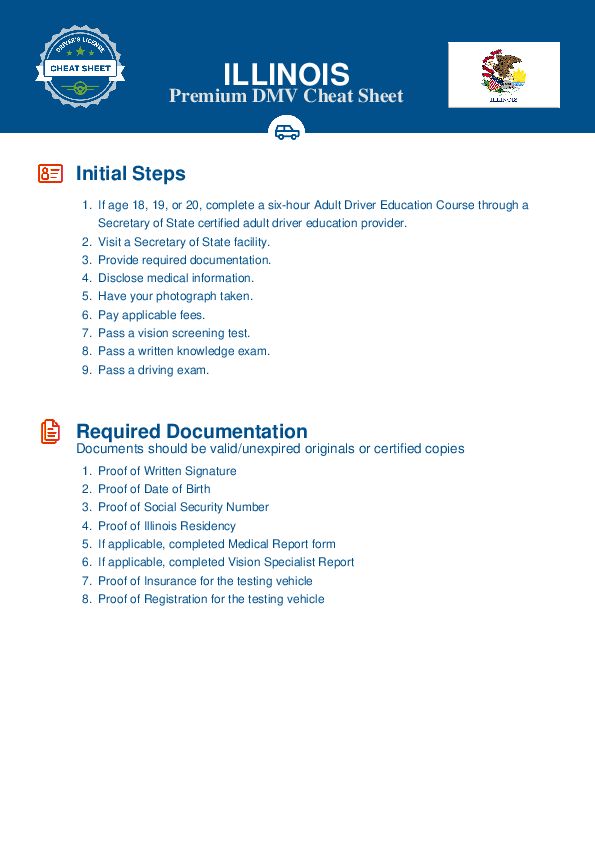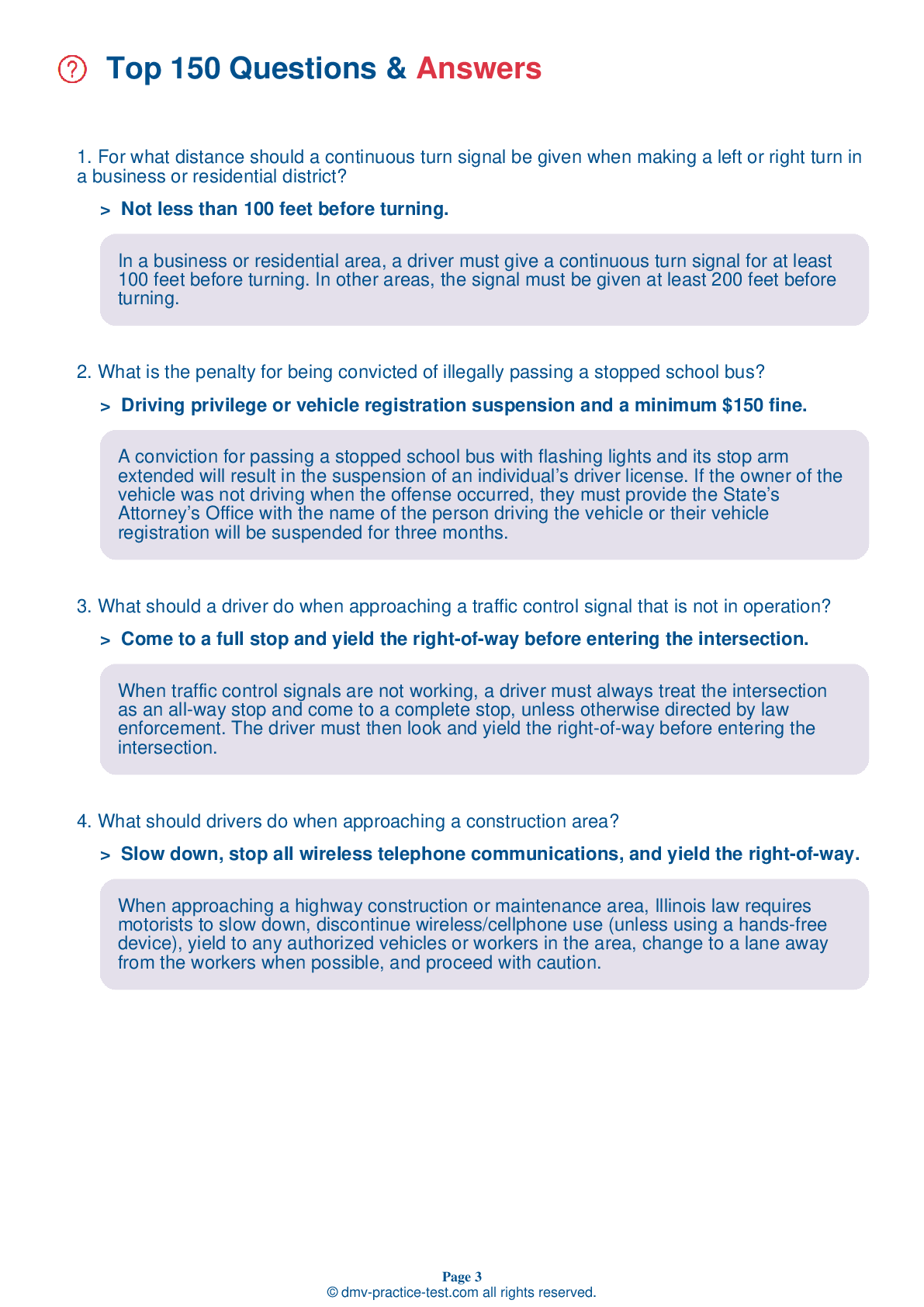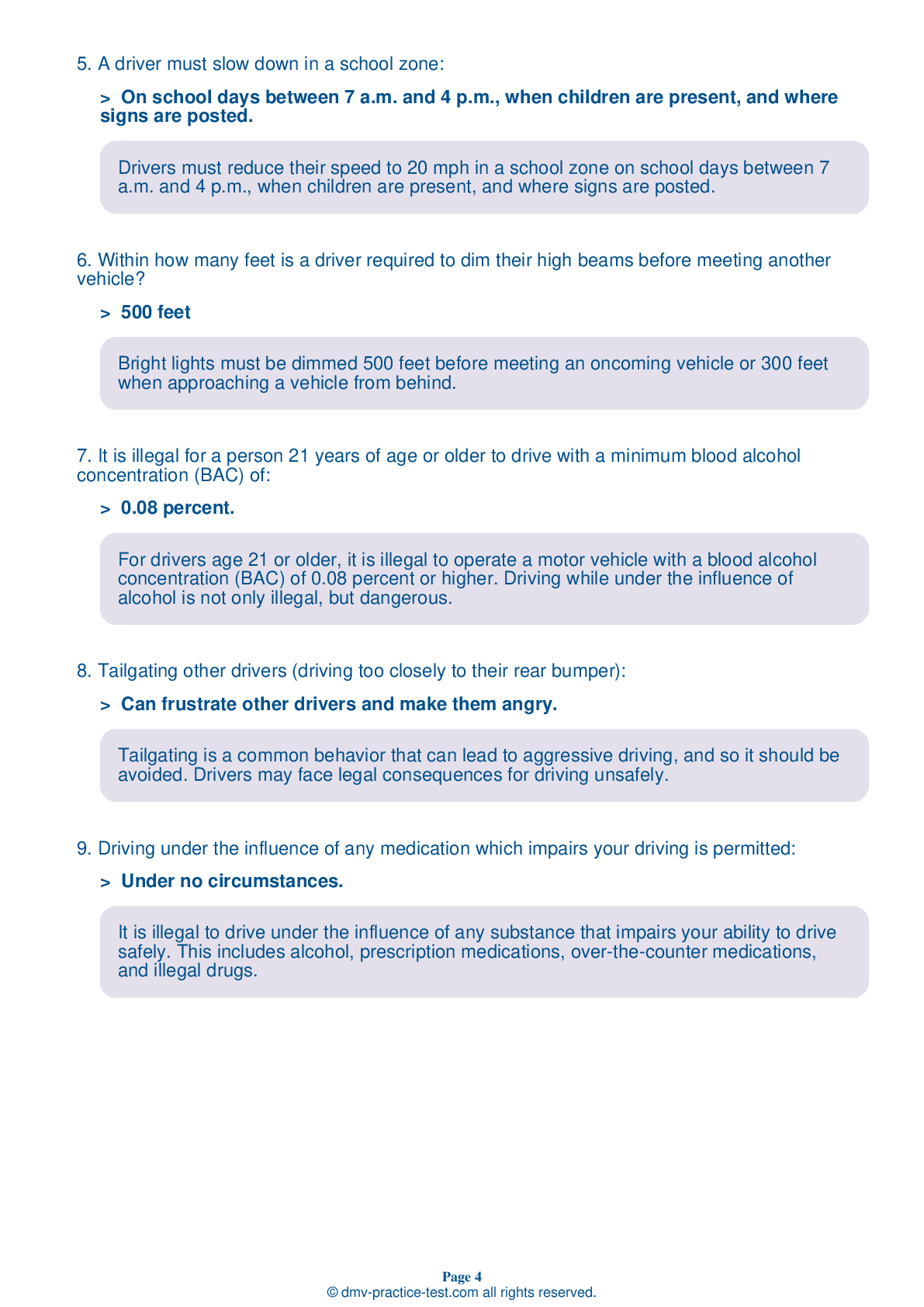FREE Illinois DMV Practice Test #12 Page 3 of 3
For January 2025, this set of Illinois DMV practise tests has been updated. It includes questions based on the most important traffic signs and rules for 2025 from the Illinois Driver Handbook. To study for the DMV driving permit test and driver's licence exam, use actual questions that are very similar (often identical!) to the DMV driving permit test and driver's licence exam.
Each question on the practise exam has a tip and explanation to help you recall the ideas. Questions about traffic rules, traffic signs, and driving statutes, as well as information from the Driver Handbook, will be included in the written portion of the official DMV test.
You must properly answer 38 of the 35 questions to receive a passing mark. To help you prepare for your Illinois instruction permit or driver's licence, take our DMV practise test.
The DMV exam is offered in a variety of languages.
Using any form of testing help will result in an automatic fail, and the DMV may take further action against your driver's licence, so avoid it.
25 . If arrested with a blood-alcohol concentration of 0.08 percent or more, an individual's driving privileges will be suspended for at least six months.
If a chemical test reveals a driver's blood alcohol concentration (BAC) to be 0.08 percent or higher, their driving privileges will be suspended for six months.
26 . This sign means:
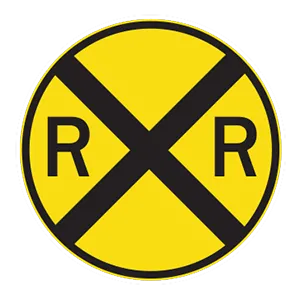
A round sign always indicates that you are approaching a railroad crossing.
27 . In urban areas, drivers moving out of an alley, building, private road, or driveway do not need to come to a complete stop before entering the roadway if the roadway is clear of traffic.
When emerging from an alley, building, private road, or driveway, a driver must come to a complete stop and yield the right-of-way to other drivers and to pedestrians.
28 . Trucks' blind spots are:
A truck's blind spots are much larger than a smaller car’s blind spots. The driver cannot see your car behind their vehicle and you can't see what’s happening in traffic ahead if you're driving too closely behind the truck. Whether you are driving behind or to the side of the truck, if you can’t see the driver’s face in their side view mirror, then they can’t see you.
29 . Which of the following blocks the smooth flow of traffic?
Rubbernecking (the practice of slowing down to look at collisions or other out-of-the-ordinary things) contributes to traffic congestion and should be avoided.
30 . Alcohol is the single greatest common factor in fatal motor vehicle crashes.
Alcohol is the number one killer on American roadways. Alcohol affects a person’s vision and slows their reaction time, so it takes longer to act in an emergency. Alcohol affects a person’s driving even if they are below the level of illegal intoxication.
31 . This road sign means:
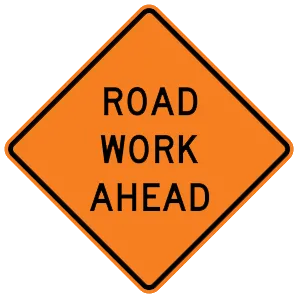
This orange warning sign tells drivers that an area of roadwork is upcoming. When traveling through a work zone, stay alert for temporary traffic control devices.
32 . This sign means:

Warning signs are usually yellow with black markings. They alert you to conditions that are immediately ahead. This sign tells drivers to prepare to allow traffic to safely merge from the right.
33 . If your car's suspension is bad, it can cause:
Your suspension helps you control your vehicle and provides a comfortable ride over varying road surfaces. If your vehicle bounces a lot after driving over a bump, or is generally hard to control, you may need new suspension parts.
34 . This sign means:
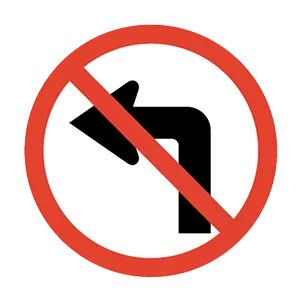
This sign means drivers cannot make a left turn. It is unsafe and unlawful to make a left turn at an intersection where this sign is posted.
35 . This road sign means:

The stop sign is the only eight-sided sign you will see on any roadway. When you encounter a stop sign, you must come to a complete stop. You may not proceed until the way is clear for you to completely and safely pass through the intersection.
Need Car Insurance? No problem!
Compare the best rates in Illinois and find a personalized policy that meets your needs.
1. Are You Currently insured ?
2. Married ?
3. Do you own your Home?
4. Do you have more than 1 car ?
5. Have you or a Family Member Honorably Served in U.S. Military ?
6. Your Name
7. Age
8. Zip code
IMPORTANT REMINDER:Auto Insurance is Mandatory to drive in Illinois. Get covered before you hit the road to avoid any fines.
Ranked by best match
